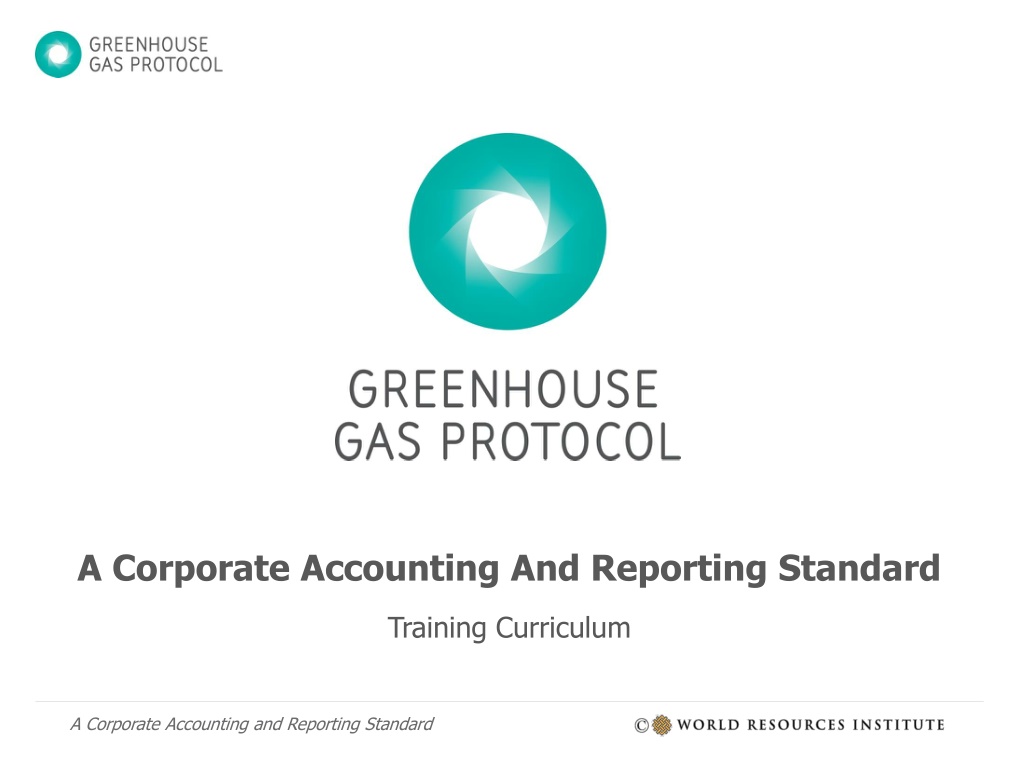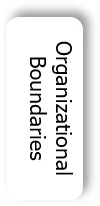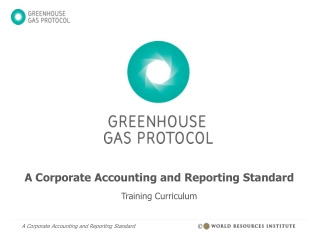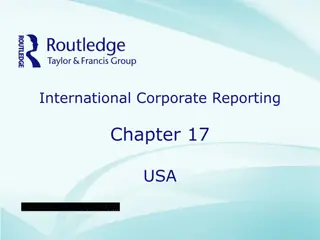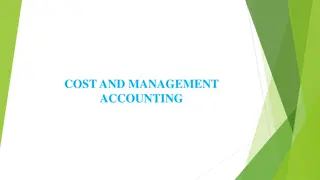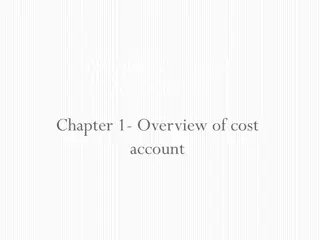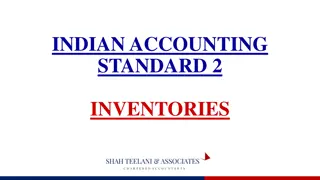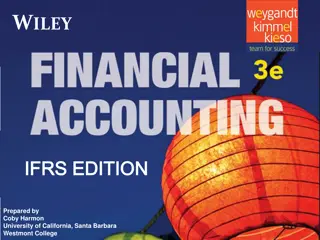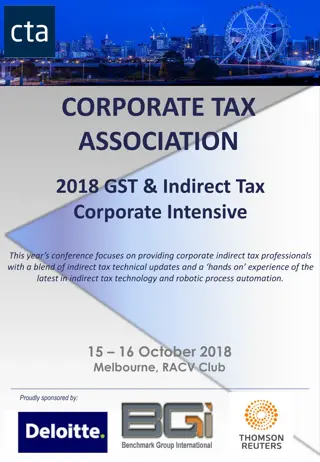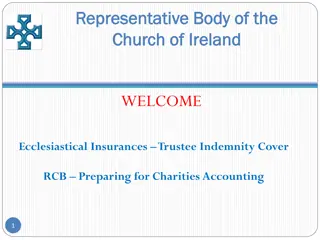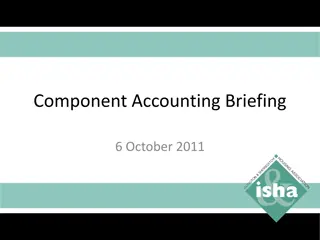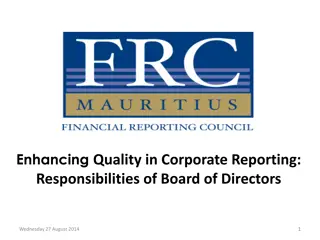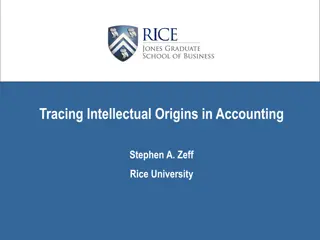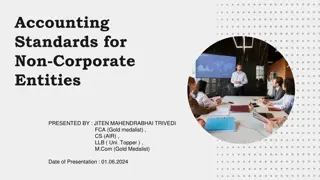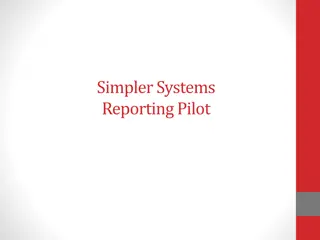A Corporate Accounting And Reporting Standard
Principles and guidelines for preparing GHG emissions inventories, focusing on organizational boundaries, operational boundaries, tracking emissions over time, calculating emissions, and reporting GHG emissions. It emphasizes relevance, completeness, consistency, transparency, and accuracy in accounting and reporting practices. The curriculum provides valuable insights for businesses and organizations aiming to effectively manage and report their emissions.
Download Presentation

Please find below an Image/Link to download the presentation.
The content on the website is provided AS IS for your information and personal use only. It may not be sold, licensed, or shared on other websites without obtaining consent from the author.If you encounter any issues during the download, it is possible that the publisher has removed the file from their server.
You are allowed to download the files provided on this website for personal or commercial use, subject to the condition that they are used lawfully. All files are the property of their respective owners.
The content on the website is provided AS IS for your information and personal use only. It may not be sold, licensed, or shared on other websites without obtaining consent from the author.
E N D
Presentation Transcript
A Corporate Accounting And Reporting Standard Training Curriculum A Corporate Accounting and Reporting Standard
Introduction Lesson Modules Principles 2. GHG Accounting and Reporting Principles Organizational Boundaries 3. Setting Organizational Boundaries Operational Boundaries 4. Setting Operational Boundaries 5. Tracking Emissions Over Time over time Tracking 6. Identifying and Calculating Emissions Calculating Emissions 7. Reporting GHG Emissions Reporting 8. Review Review A Corporate Accounting and Reporting Standard
Review Lesson 8 A Corporate Accounting and Reporting Standard
Introduction The GHGP Corporate Standard Principles Organizational Boundaries Provides standards and guidance for preparing GHG emissions inventories Operational Boundaries Primarily used by businesses; also used by other organizations and policymakers over time Tracking Policy neutral, although used by and compatible with many GHG programs Calculating Emissions Emissions inventories bring value to business Reporting Review A Corporate Accounting and Reporting Standard
Introduction GHG Accounting and Reporting Principles Principles To ensure that your inventory represents a faithful, true and fair account of your company s emissions, adhere to the GHG accounting and reporting principles: Organizational Boundaries Operational Boundaries 1. RELEVANCE 2. COMPLETENESS over time Tracking 3. CONSISTENCY Calculating Emissions 4. TRANSPARENCY 5. ACCURACY Reporting Review A Corporate Accounting and Reporting Standard
Introduction Organizational Boundaries Principles Determine which parts of the company are included in the inventory, and at what percentage Organizational Boundaries Operational Boundaries 100% 1. Equity Share 1. Equity Share 2. Control 2. Control a) Financial control a) Financial control b) Operational Control b) Operational Control over time Tracking 30% 30% Total emissions accounted can vary significantly depending on consolidation approach Calculating Emissions 100% Reporting Companies can use both approaches to get a more thorough assessment of their emissions Review A Corporate Accounting and Reporting Standard
Introduction Summary of Organizational Boundary Approaches Principles APPROACH DEFINITION GHG ACCOUNTING Organizational Boundaries Equity share % owned Percent ownership Operational Boundaries If yes: 100% If no: 0% If joint: % owned Directs financial policies to gain economic benefits Financial control over time Tracking Calculating Emissions Authority to introduce and implement operating policies If yes: 100% If no: 0% Operational control Reporting Review A Corporate Accounting and Reporting Standard
Introduction Operational Boundaries Principles Operational boundaries determine which emissions are included and how they are classified Organizational Boundaries SCOPE TYPE OF EMISSIONS direct REPORTING mandatory Operational Boundaries Scope 1 purchased electricity mandatory Scope 2 over time Tracking all other indirect optional Scope 3 Apply selected consolidation approach to leased assets, outsourced activities or franchises Calculating Emissions Reporting Scope prevent emissions from being double-counted Review A Corporate Accounting and Reporting Standard
Scopes 1, 2 and 3 Introduction Principles Organizational Boundaries Operational Boundaries over time Tracking Calculating Emissions Reporting Account for and report emissions from each scope separately Review A Corporate Accounting and Reporting Standard
Introduction Principles Organizational Boundaries Operational Boundaries over time Tracking Calculating Emissions Reporting Review A Corporate Accounting and Reporting Standard
Introduction Tracking Emissions Over Time Principles did NOT exist 15 20 Base year: the year in history against which an organization s emissions are tracked over time Organizational Boundaries Define your organization s recalculation policy Define significance threshold to trigger base year recalculation 20 E M I S S I O N S Operational Boundaries 30 30 Recalculate for structural changes changes in calculation methodology discovery of significant errors over time Tracking 25 Calculating Emissions 30 30 25 Don t recalculate for organic growth or decline changes involving facilities that didn t exist in base year out-/in-sourcing of activities previously under a different Scope 3 2 1 Reporting Company acquires unit C Increase in production Base Year Review A Corporate Accounting and Reporting Standard
Introduction Identifying and Calculating Emissions Principles Identify Sources stationary, mobile, process, fugitive Organizational Boundaries Select Calculation Approach direct measurement, stoichiometry, estimate emissions Operational Boundaries Collect Data and Choose Emissions Factors = data emissions factor over time Tracking Emission t of t of CO2e of emissions x x Activity = GWP emissions Apply Calculation Tools http://www.ghgprotocol.org/calculation-tools Calculating Emissions Reporting Roll-up Data to Corporate Level report activity data and emissions estimates to corporate Review A Corporate Accounting and Reporting Standard
Introduction Reporting Emissions Required Principles Company Description Inventory Boundary Organizational Boundaries Follow 5 GHGP principles when reporting Emissions Information Operational Boundaries Scope 2 Scope 1 If participating in a GHG program, check its reporting requirements over time Tracking Optional Calculating Emissions Emissions and Performance Information Interpret emissions using ratio indicators Scope 3 Reporting Offsets Information Review A Corporate Accounting and Reporting Standard
Introduction Questions Principles Organizational Boundaries Operational Boundaries over time Tracking Calculating Emissions Reporting Review A Corporate Accounting and Reporting Standard
